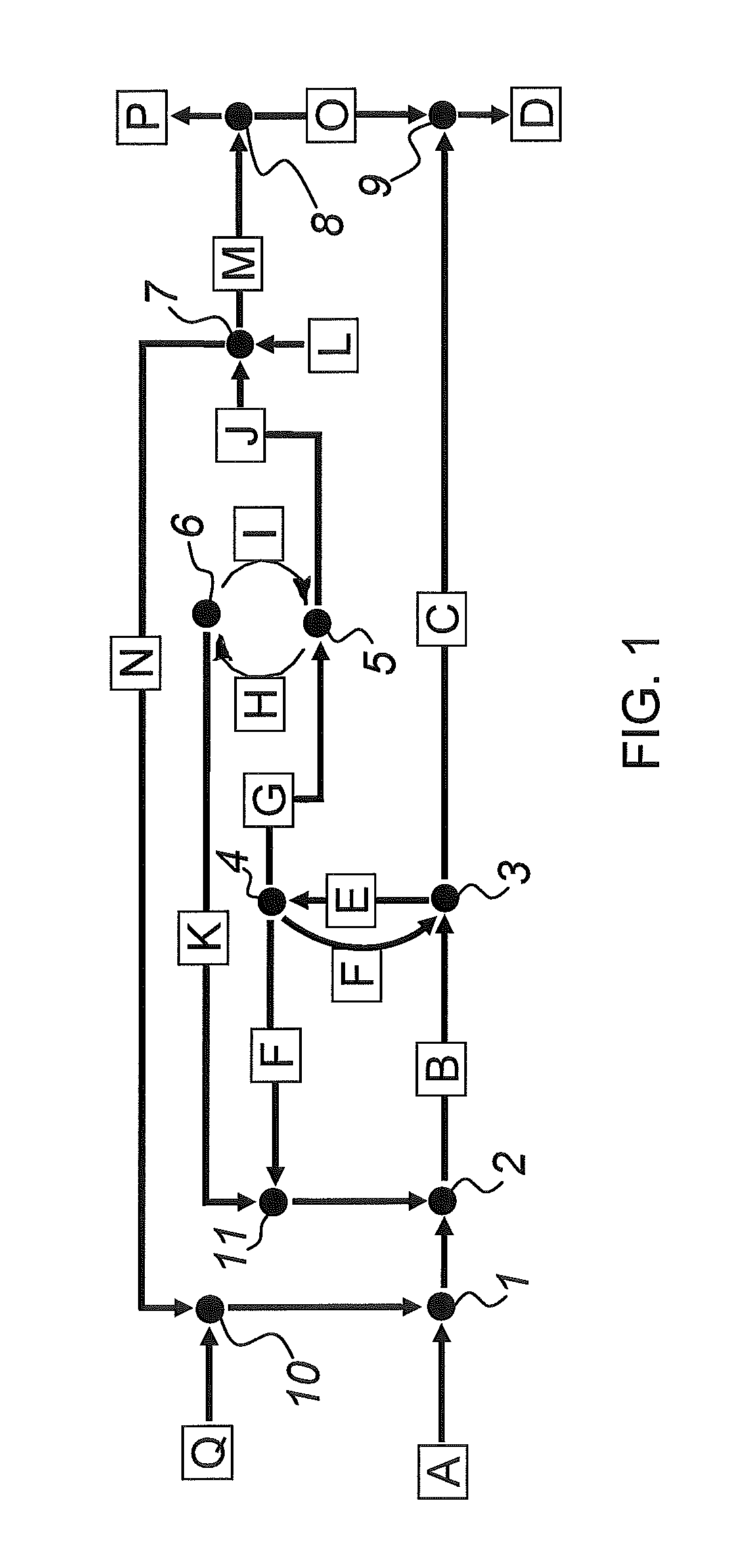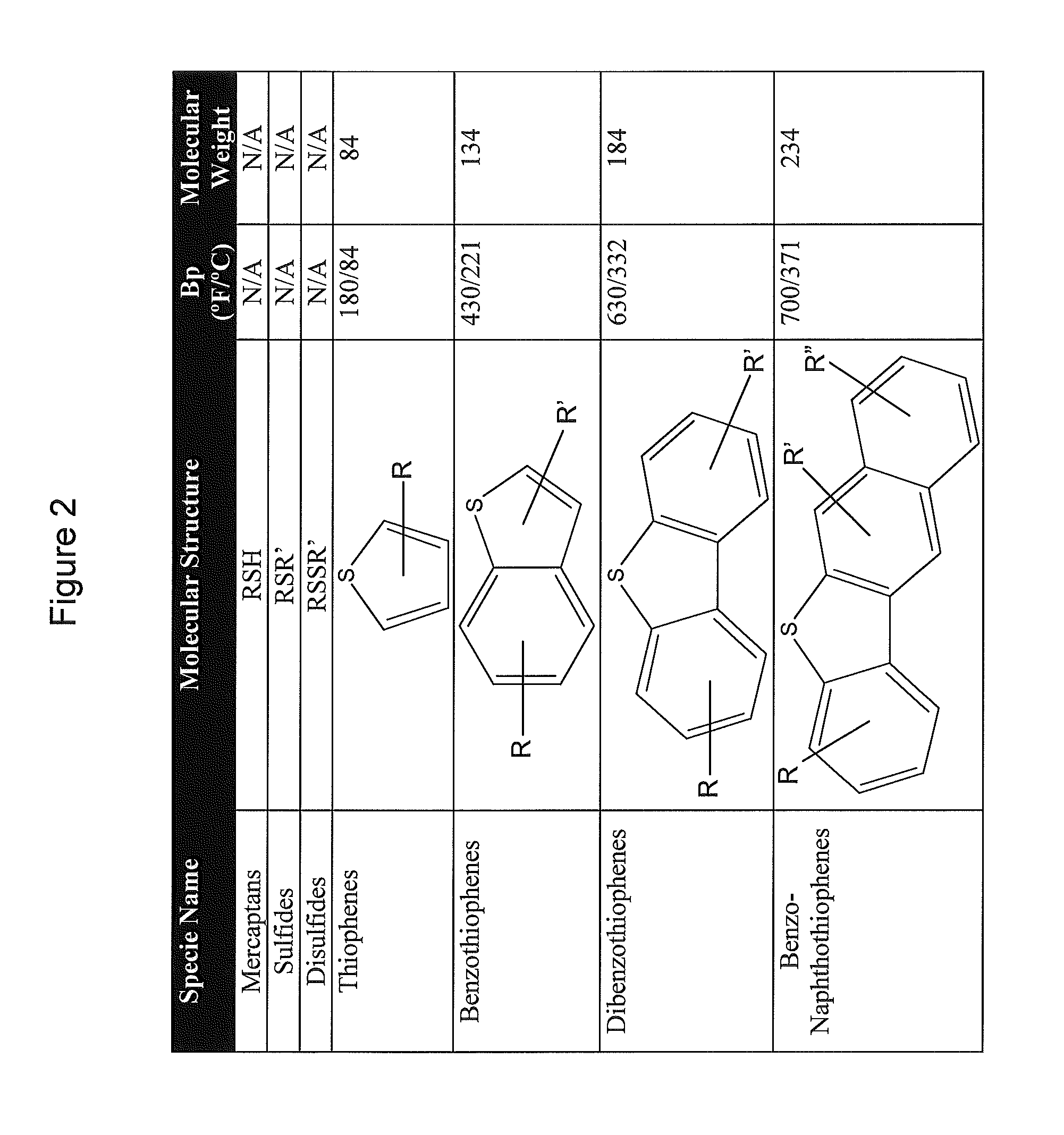Sulfoxidation catalysts and methods and systems of using same
a technology of sulfur oxides and catalysts, applied in the field of catalyst compounds and catalytic processes, can solve the problems of olefin content, olefin content, and current processes having adverse effects on olefin content,
- Summary
- Abstract
- Description
- Claims
- Application Information
AI Technical Summary
Benefits of technology
Problems solved by technology
Method used
Image
Examples
examples
One Possible Embodiment of the Preparation of Bis (Glycerol) Oxotitanium (IV)
[0060]Titanium oxychloride (2 kilograms (kg), Millenium Chemicals) was diluted with de-ionized water (2 kg) and then added to a 20 liter (l) round bottom flask containing glycerine (2 kg). The mixture was allowed to stir until a straw color was attained. The 20 l round bottom flask was then heated to 50° C. under vacuum (−25 inches Hg) in a rotary evaporator to remove excess water and hydrochloric acid. When no further liquid condensate was noted, the flask was recharged with water (0.65 l) and rotary evaporated to further remove excess water and hydrochloric acid. This was repeated two additional times. After the final evaporation, the viscous, straw colored liquid was weighed (2.64 kg) and diluted with methoxypropanol (0.85 kg) to reduce the viscosity. This was then neutralized with triethylamine (3.3 kg, 33% weight / weight in ethanol). The combined neutralized solution was then chilled for several hours p...
examples 1-18
[0069]Reactions were run varying catalyst volume (Vol.), oxidant level (Oxidant, H2O2 concentration), acid strength (Acid, 25% acetic vs Glacial Acetic), and temperature (T) according to General Method A and analyzed for percent conversion (% yield) after 1 hour. The catalyst was a methanol solution of bis(glycerol)oxotitanium(IV). The volume of acid was between about 8.35 and about 8.37 g. The amount of oxidant was about 2.80 g. The results obtained are shown below in Table 1.
[0070]
TABLE 1runAcidVol.OxidantT% yield225% acetic 10 μlH2O2 (25%)50° C.16.64Glacial acetic acid 10 μlH2O2 (25%)50° C.40.9625% acetic100 μlH2O2 (25%)50° C.1.98Glacial acetic acid100 μlH2O2 (25%)50° C.1001025% acetic 10 μlH2O2 (50%)50° C.1.412Glacial acetic acid 10 μlH2O2 (50%)50° C.96.41425% acetic100 μlH2O2 (50%)50° C.3.616Glacial acetic acid100 μlH2O2 (50%)50° C.10017Glacial acetic acid100 μlH2O2 (50%)50° C.10018Glacial acetic acid100 μlH2O2 (50%)50° C.100125% acetic 10 μlH2O2 (25%)RT03Glacial acetic acid 10...
example 19
[0071]Example 16 (above) was repeated drawing aliquots for analysis at 10 minute intervals for 40 minutes. The results obtained are shown below in Table 2:
[0072]
TABLE 2Time (minutes)% Conversion1063.42098.83010040100
PUM
| Property | Measurement | Unit |
|---|---|---|
| temperatures | aaaaa | aaaaa |
| temperatures | aaaaa | aaaaa |
| temperatures | aaaaa | aaaaa |
Abstract
Description
Claims
Application Information
 Login to View More
Login to View More - R&D
- Intellectual Property
- Life Sciences
- Materials
- Tech Scout
- Unparalleled Data Quality
- Higher Quality Content
- 60% Fewer Hallucinations
Browse by: Latest US Patents, China's latest patents, Technical Efficacy Thesaurus, Application Domain, Technology Topic, Popular Technical Reports.
© 2025 PatSnap. All rights reserved.Legal|Privacy policy|Modern Slavery Act Transparency Statement|Sitemap|About US| Contact US: help@patsnap.com



